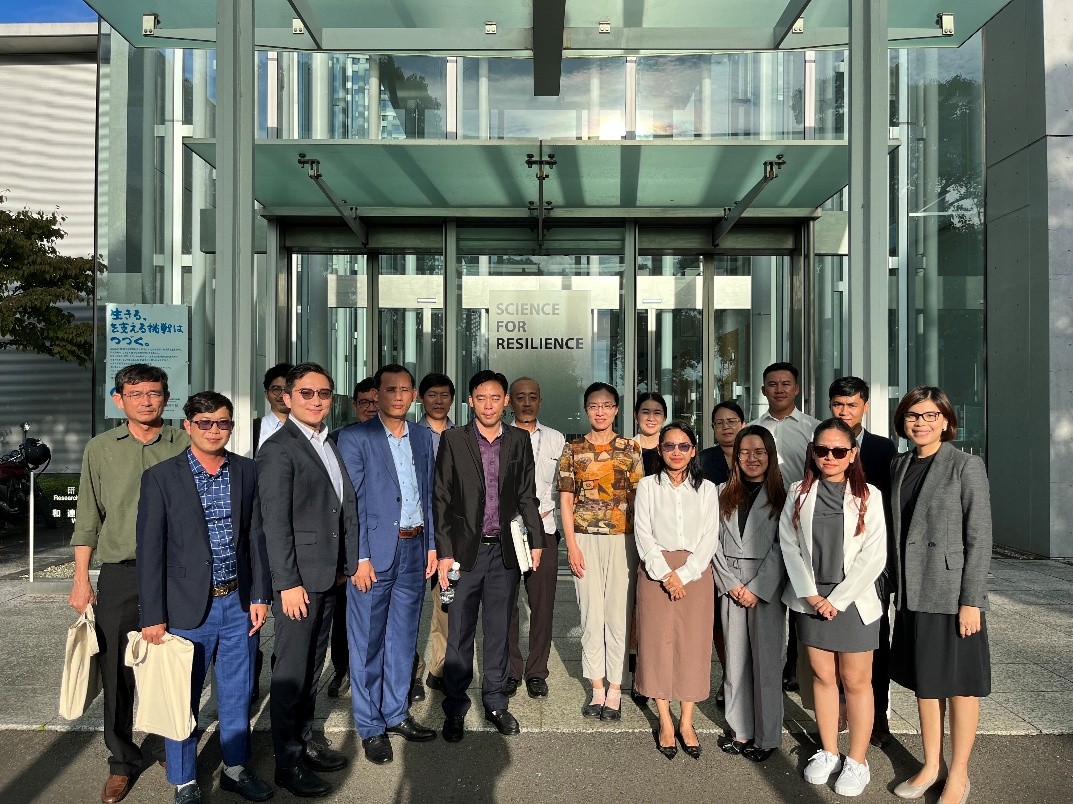by Nobuhiko Daito,Transport Specialist; Hakim A. A. Al-Aghbari, Senior Highway Engineer; Masakazu Miyagi, Infrastructure Specialist ETC
One of the most critical infrastructure systems is transport. Building resilient transport infrastructure ensures that people can get to work, children can reach school, and the sick can access urgent medical care, even amid disruptions caused by disasters. While incorporating resilience into these systems may involve higher initial investments, the long-term resilience dividend is significant in terms of fewer disruptions and reduced economic impact. The overall net benefit from resilient infrastructure investments in developing countries is estimated to be $4.2 trillion over the lifetime of new infrastructure, translating to a $4 return for every $1 invested in resilience, according to a 2019 report by the World Bank. Most importantly, taking proactive measures to prevent, mitigate, and prepare for disasters is far more effective than responding and recovering after such events.
Given these benefits, is there a role for the private sector in disaster risk management (DRM) of the transport sector which has traditionally been led by the public sector? Absolutely. The Sendai Framework for Disaster Risk Reduction highlights the importance of both public and private investment in disaster risk prevention and reduction to enhance disaster preparedness and mitigation. The Japan-World Bank Program for Mainstreaming Disaster Risk Management in Developing Countries (Japan Program), managed by the Global Facility for Disaster Reduction and Response (GFDRR)’s Tokyo Disaster Risk Management (DRM) Hub, is supporting efforts to build resilient transport systems by sharing global best practices in public-private partnerships (PPP) and offering opportunities for developing countries to learn from these practices.
As a disaster-prone country, Japan has gained extensive experience in disaster risk reduction and recognizes the value of private sector participation in infrastructure services. Accordingly, Japan has introduced various procurement and contracting schemes that have enhanced financial sustainability while also helping mobilize technically sound solutions for building climate- and disaster-resilient networks. The PPP procurement and contracting schemes have been particularly effective in accelerating post-disaster road reconstruction as demonstrated after the Great East Japan Earthquake and Tsunami in 2011. Local governments have also established framework agreements with private expressway operators to secure emergency access routes to affected areas, ensuring that first responders and logistics firms can deliver essential goods like food and water.
The private sector increasingly sees disaster risk management as essential for protecting assets, maintaining supply chains, and ensuring business continuity and competitiveness. For example, a Japanese expressway company’s business continuity plan for earthquakes includes a comprehensive post-disaster response strategy. This plan prioritizes customer safety, minimizes asset damage, ensures timely recovery to prevent secondary disasters, facilitates emergency traffic, and reduces operational revenue losses.
In the aftermath of major disasters like earthquakes or storms, the public sector typically bears the costs of large-scale recovery. To manage reconstruction more effectively, governments are increasingly turning to the private sector by activating pre-arranged emergency contracts and framework agreements that enable rapid mobilization of resources for critical infrastructure repairs and service restoration. Such agreements streamline procurement and implementation while leveraging the private sector’s capacity and speed in crisis response. For instance, a well-designed toll road concession contract includes a thorough disaster risk assessment and optimally allocates these risks between public and private partners, with clearly defined force majeure clauses.

Technical Knowledge Exchange on rural road resilience with Cambodian delegates at the National Research Institute for Earth Science and Disaster Prevention (NIED), Japan.
Practical Applications in Jordan and Cambodia
The Japan Program is helping share these lessons with client countries confronting similar challenges. Such efforts build on ongoing initiatives to apply Japan’s practical experience to strengthen transport infrastructure resilience in countries like Jordan and Cambodia.
In Jordan, the government is aiming to improve the financial sustainability of road operations and maintenance (O&M) through PPP and toll road systems. Technical assistance delivered through GFDRR’s Tokyo DRM Hub is helping introduce toll roads and outsource O&M to private companies, enabling predictable revenue streams and efficient maintenance, supported by a Key Performance Indicator (KPI) system. Japanese experts are sharing their toll road policies and practical experiences —including road concessions, DRM for toll infrastructure, and the legal framework surrounding PPPs— to help Jordan strengthen its transport O&M through effective PPP models.
Similarly, as part of technical assistance financed by the Japan Program, a study tour in Japan was organized for Cambodia’s Ministry of Rural Development. This tour introduced delegates to Japan’s expertise in DRM and rural road resilience. Key measures were showcased, focusing on addressing the vulnerability of rural roads through a lifecycle approach. This included disaster risk-informed road network planning, resilient engineering design, proactive asset monitoring and maintenance, contingency planning for disaster preparedness and successful PPPs.
The initiatives in Jordan and Cambodia illustrate the vital role that the Japan Program can play in helping client countries create an enabling environment for private sector engagement in DRM, including in the transport sector. When governments demonstrate a serious commitment to assessing risks and optimizing risk allocation for public assets, private investors are more likely to view these risks as manageable and engage accordingly. Such collaboration allows the government to deliver resilient infrastructure networks that benefit both stakeholders and the broader public.
